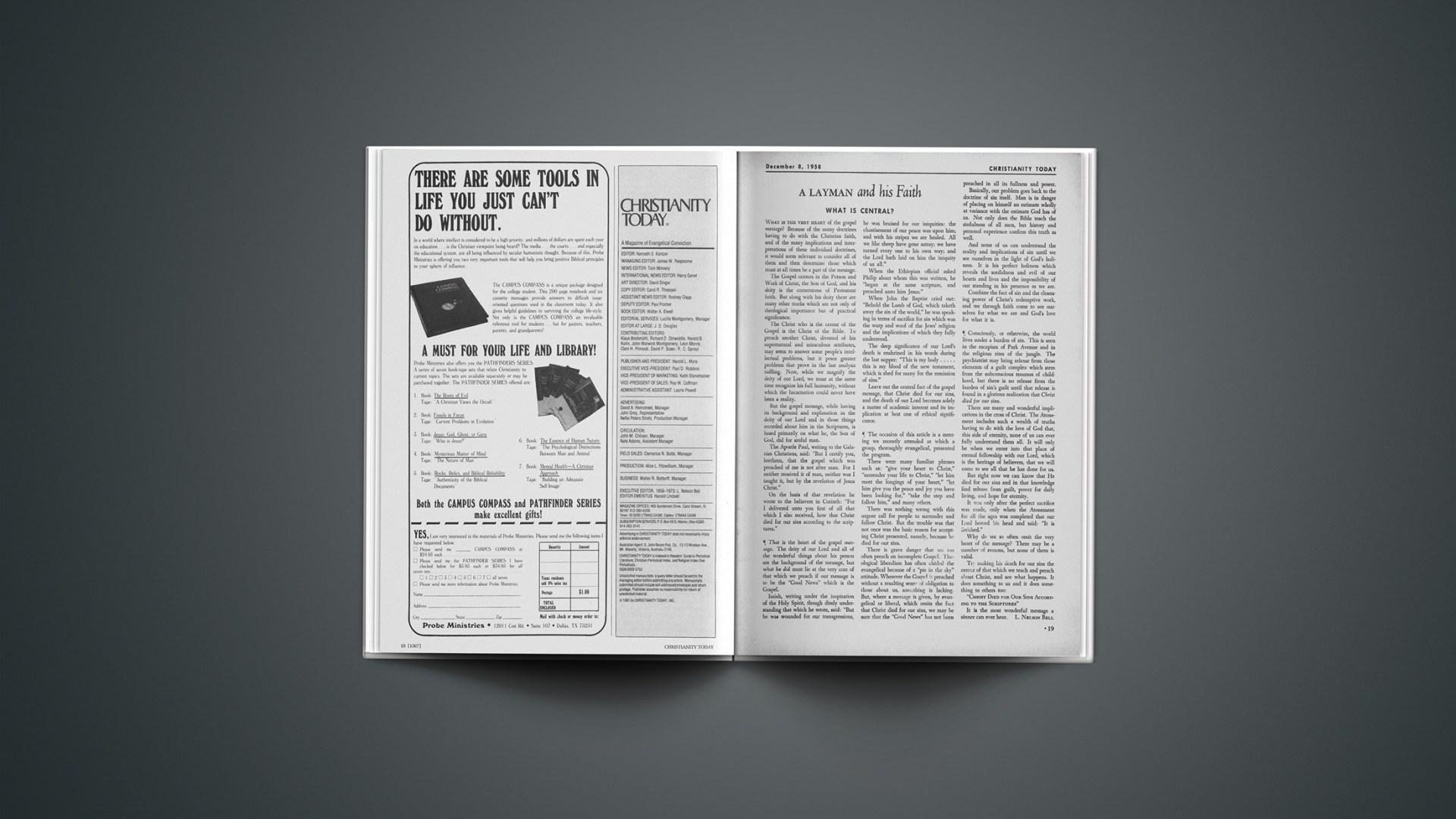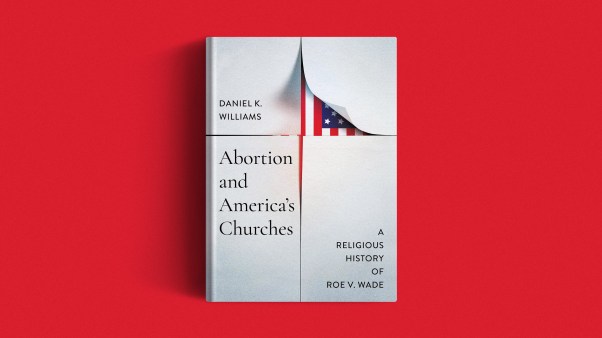The two great questions currently raised about the epistle to the Ephesians concern the identity of its author and the definition of its central theme. The first asks whether Paul actually wrote this letter and is primarily a problem in higher criticism. The second asks whether the visible or the invisible church is the theme of Ephesians, and is a problem in lower criticism or interpretation. There is also a question whether the letter was addressed “to the saints in Ephesus?” We feel that this latter question is not of great importance inasmuch as it is clear to all that Ephesus was at least one of its destinations although perhaps there were other places in Asia Minor to which it was sent as a circular letter.
The question of Pauline authorship is of prime importance. This is especially so because the alternative to Pauline authorship is no known authorship. If canonicity rests ultimately on apostolicity, as this writer believes, taking this book from Paul and leaving it of uncertain authorship, makes it impossible to affirm, with confidence, that it is an inspired document. This accentuates the importance of the problem but does not afford the solution. We maintain Pauline authorship because the strongest external evidence, such as the manuscripts and tradition, testify to it. Why, then, does anyone doubt it? Many, including Interpreter’s Bible, deny it in spite of this powerful external evidence because it is felt that certain things are said in the letter which Paul could not have said.
Since space precludes any thorough discussion of this question here, let us simply mention one of the texts which, supposedly, Paul could not have written; show that he might have written it; and let the matter rest there. In 1:15 we read: “For this reason, because I have heard of your faith in the Lord Jesus …” If Paul had written this Epistle, how could he have “heard” of the faith of the Ephesians, it is asked. Would he not have known this from first-hand experience? That is a perfectly reasonable question. If this statement in 1:15 means that the writer was hearing, for the first time, of the faith of the very persons to whom Paul had earlier ministered, it simply could not have been Paul who wrote the words. Granted. But do these words require this construction? If Paul did write this letter, could he not have heard of the continuing faith of some of these people to whom he had earlier ministered? And, could he not have heard of the new faith of some of the new people who had come into the great parish after his leaving? If, today, pastors were in the habit of writing letters to congregations which they had formerly served, could they not congratulate a former people on “hearing” of their (continuing) faith?
Visible Or Invisible?
So far as the message of Ephesians is concerned, the engrossing interest of our time is whether it is speaking of the visible or invisible church. No one doubts that its central teaching deals with the Christian church. There is a lively debate, however, whether this is the church visible or invisible. Those who are most enthusiastic about the “ecumenical movement” are strongly inclined to regard this letter as its manifesto. They suppose that when the writer speaks of there being but “one body” (4:4) he means “one visible and organized church.” Many others, however, find that very expression “one body” conclusive proof that the writer is speaking of the invisible, and not the visible, church. They argue thus: Paul writes that the church is one body, not merely that it ought to be one body. If he meant to say that the church actually is one body in the sense of a visible organization, and always would be so long as the church exists, that would simply be contrary to fact. The church never has been one organized body and certainly it is not so now. If, therefore, Paul is saying that the church is one body, in the sense of one visible organization, he is saying in the same words that the church is not. Instead of affirming the church he would be denying it. Granted that the church ought to be one visible body; granted that no Christian ought ever to be content without striving to visibilize the spiritual unity of the church and more and more; still, all of this assumes that the church, as it now is, is not one visible body. And the church was not such in apostolic times; or, if it was, it shortly thereafter became defunct, and has not existed again for the last 1900 years. Therefore, these words themselves indicate that Paul speaks of the church invisible. There is very much more to this question, but this must suffice for an indication of the drift of the discussion.
Content
Introduction 1:1, 2
I. Doctrines 1:3–4:16
A. Election 1:3–6
B. Redemption 1:7–2:10
(1) Objective Aspect (by blood of Christ) 1:7–12
(2) Subjective Aspect
(a) Faith 1:13
(b) Sealing 1:14
(Paul’s first ejaculatory prayer, 1:15–23)
(c) Regeneration 2:1–10
C. The Church 2:11–4:16
(1) Unity
(a) Of Jews and Gentiles 2:11–19
(b) Of Christ and Believers 2:20
(2) Mystery 3:1–13
(Paul’s second ejaculatory prayer 3:14–21)
(3) Members
(a) Unified 4:1–6
(b) Diversified 4:7–11
(c) Edified 4:12–16
II. Duties 4:17–6:22
A. General Principles 4:17–24
(1) Negative 4:17–22
(2) Positive 4:23–24
B. Application to Specific Matters 4:25–6:9
(1) Practical 4:25–30
(a) Honesty 4:25
(b) Anger 4:26, 27
(c) Stealing 4:28
(d) Conversation 4:29–32
(2) Contrasts 4:31–5:20
(a) Love vs. Lust 5–7
(b) Light vs. Darkness 5:8–17
(c) Spirit vs. Wine 5:18–20
(3) Human Relationships 5:22–6:9
(a) Husband-Wife 5:22–33
(b) Parents-Children 6:1–4
(c) Masters-Servants 6:5–9
C. Summary Exhortation 6:10–22
Conclusion—Benediction 6:23, 24
Doctrinal
The outline of the content of Ephesians shows clearly that it is evenly divided between doctrine and duty. The doctrinal part, after the instructive salutation, begins in the eternities with divine election. This context, together with Romans 9, is the locus classicus for this theme. The difference between these two Pauline passages is that the Romans context deals with negative and positive predestination, or reprobation as well as election; while here, in the opening verses of Ephesians, only the positive aspect of predestination, namely election, is in view.
Some persons seem prone to think that if election is true there is no necessity for a Gospel. “If a person is elected to salvation then it does not matter whether he hears or believes …” Paul did not think so; for no sooner does he articulate election than he shows how it unfolds in the great redemptive work of Jesus Christ. This engrosses his attention in most of the rest of the first chapter.
Discussing the eternal election of God and the provision of the atonement in Christ must have led Paul’s inspired mind to think of the problem of men’s ever believing and being saved, inasmuch as they were dead in trespasses and sins (2:1). So he marvels at the fact that God not only provided salvation but applied it as well: “And you hath he quickened, who were dead … quickened us together with Christ.” He concludes this discussion of salvation by hearkening back to his earlier teaching of election. Paul sees the redemption of Christ, both in its provision and application, as a working out of the purpose of God. “For we are his workmanship, created in Christ Jesus unto good works, which God hath before ordained that we should walk in them” (2:10).
Having laid the foundation-election and salvation, Paul now builds on it his structure of the church. For it is because Jew and Gentile alike are saved by the same Christ and his shed blood that the “middle wall of partition” is broken down between them and they are made one. This is the “mystery” which had never previously been revealed “as it is now revealed” (3:5). As intimated earlier, this church, the one true church, founded “on the apostles and prophets Jesus Christ himself being the chief corner stone” (2:20) is the central theme of the whole book.
Practical
The ethical or practical part of the Epistle is rich and full. And it grows out of the doctrinal emphasis on the unity of the church. The various admonitions are inculcated to promote that harmony among the members of the church which befits those who are redeemed by one Saviour and are built on one foundation.
This is particularly apparent in the duties pertaining to the three sets of fundamental human relationships discussed: husband-wife (5:22–33); parents-children (6:1–4); masters-servants (6:5–9). Authority binds them all together in one unity. And that authority of the husband, of the parent, and of the employer, is actually the authority of Christ working through these subordinates whom he has placed as his vicegerents in these basic human groups. Thus Christ by his death unites all in one and by his living authority binds all together into a growing unity.
The conclusion pictures the Christian as engaged in a battle to the finish with the powerful hosts of evil whom only the strength of God is able to vanquish, but which strength is available to the humble and dependent Christian soul.
We close with a brief word about commentaries on Ephesians. There are many good ones; more than we have space even to list. In our opinion the work of Charles Hodge, Commentary on the Epistle to the Ephesians, (New York, 1862), its fine exegesis, its incisive doctrinal analysis, and its valuable practical observations is still the best. Meyer and Abbott, International Critical Commentary, are important critical works; Francis Beare is well worth reading in Interpreter’s Bible, but with a critical eye. John Mackay’s God’s Order; the Ephesian Letter and This Present Time (New York, 1953) shows a leading ecumencist’s competent handling of this significant letter. The dispensational view of this church epistle is clearly given in L. S. Chafer’s The Ephesian Letter (New York, 1935).
JOHN H. GERSTNER
Professor of Church History
Pittsburgh-Xenia Theological Seminary
• ED.—For a detailed discussion of points raised in the above article, readers are referred to an excellent study of the epistle in the Shield Bible Study Series, The Epistle to the Ephesians, by John H. Gerstner, Baker Book House, Grand Rapids, $1.50.










